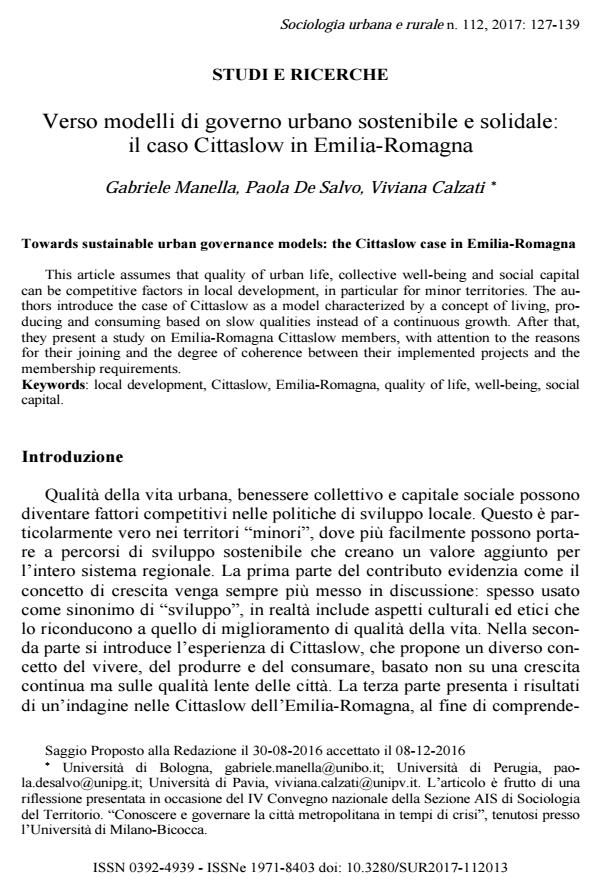Towards sustainable urban governance models: the Cittaslow case in Emilia-Romagna
Journal title SOCIOLOGIA URBANA E RURALE
Author/s Gabriele Manella, Paola de Salvo, Viviana Calzati
Publishing Year 2017 Issue 2017/112
Language Italian Pages 13 P. 127-139 File size 162 KB
DOI 10.3280/SUR2017-112013
DOI is like a bar code for intellectual property: to have more infomation
click here
Below, you can see the article first page
If you want to buy this article in PDF format, you can do it, following the instructions to buy download credits

FrancoAngeli is member of Publishers International Linking Association, Inc (PILA), a not-for-profit association which run the CrossRef service enabling links to and from online scholarly content.
This article assumes that quality of urban life, collective well-being and social capital can be competitive factors in local development, in particular for minor territories. The authors introduce the case of Cittaslow as a model characterized by a concept of living, producing and consuming based on slow qualities instead of a continuous growth. After that, they present a study on Emilia-Romagna Cittaslow members, with attention to the reasons for their joining and the degree of coherence between their implemented projects and the membership requirements.
Keywords: Local development, Cittaslow, Emilia-Romagna, quality of life, well-being, social capital
- Assessing the Success of the Development Strategy of the Cittaslow Movement: An Analysis of Revitalisation Programs and Experts Insights on the Model for Small Towns’ Sustainable Development Agnieszka Jaszczak, Ewelina Pochodyła-Ducka, Rasa Pranskuniene, in Sustainability /2024 pp.4459
DOI: 10.3390/su16114459 - Cittàslow as An Alternative Path of Town Development and Revitalisation in Peripheral Areas: The Example of The Lublin Province Sebastian Bernat, Małgorzata Flaga, in Sustainability /2022 pp.14160
DOI: 10.3390/su142114160
Gabriele Manella, Paola de Salvo, Viviana Calzati, Verso modelli di governo urbano sostenibile e solidale: il caso Cittaslow in Emilia-Romagna in "SOCIOLOGIA URBANA E RURALE" 112/2017, pp 127-139, DOI: 10.3280/SUR2017-112013